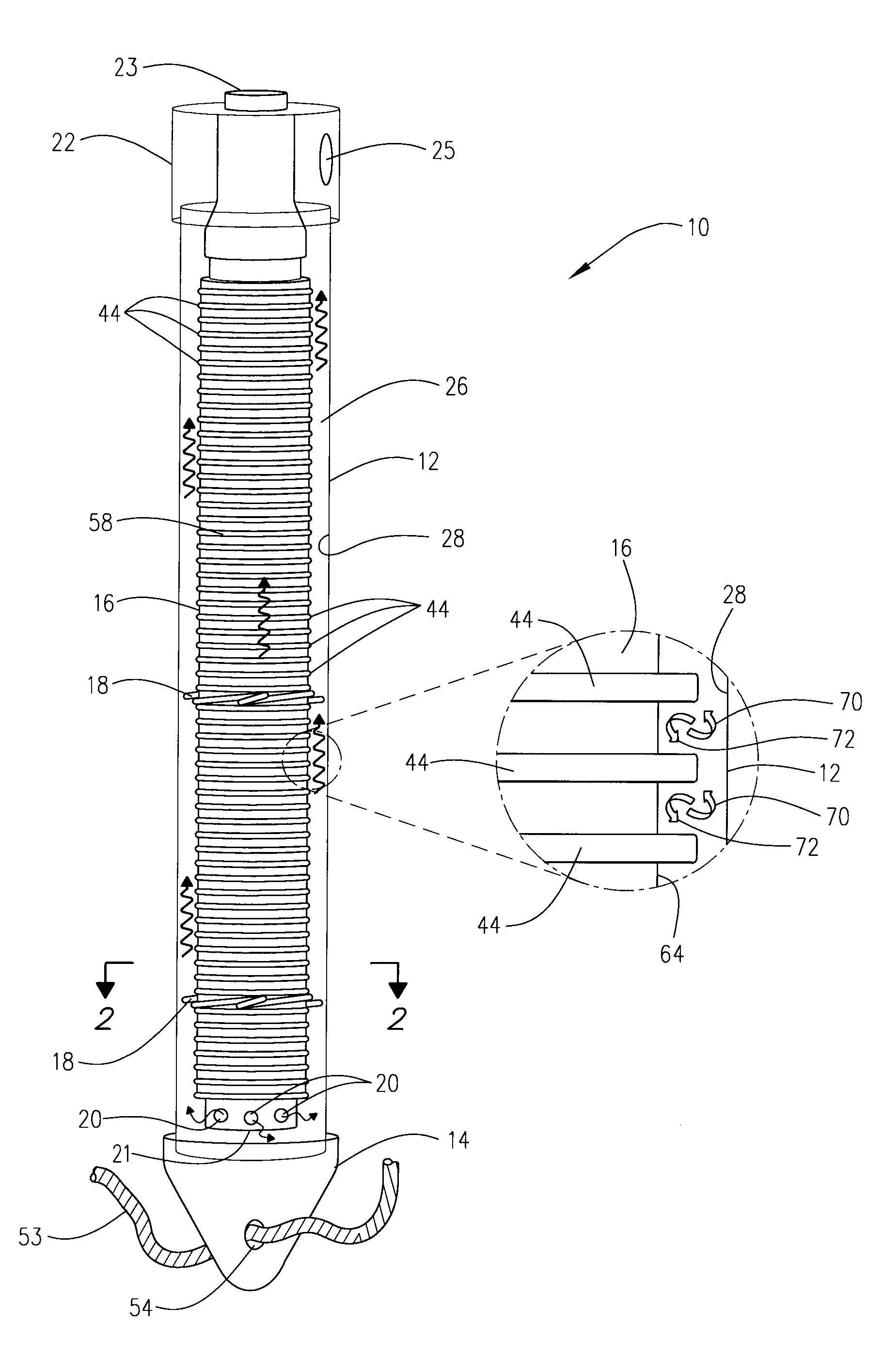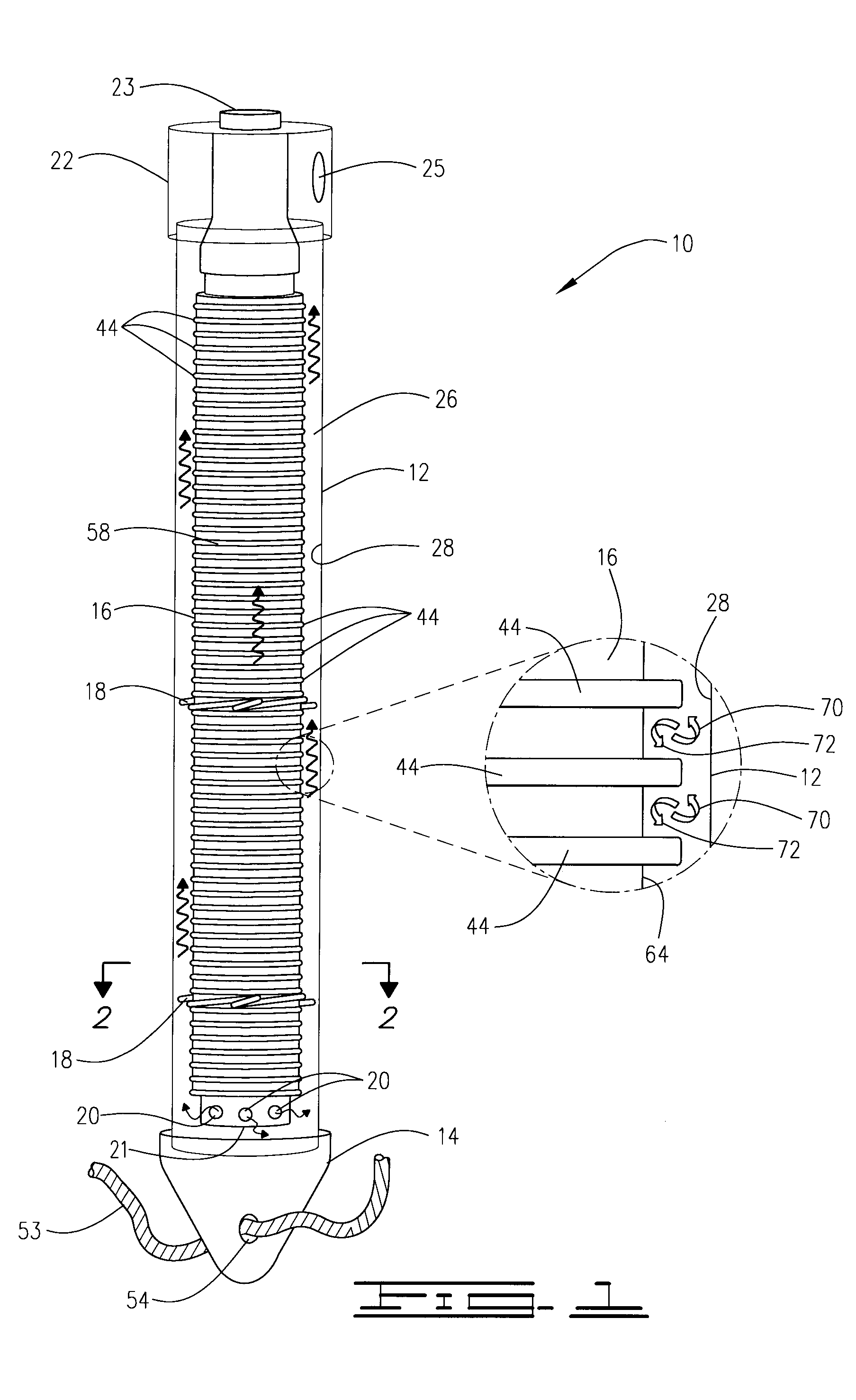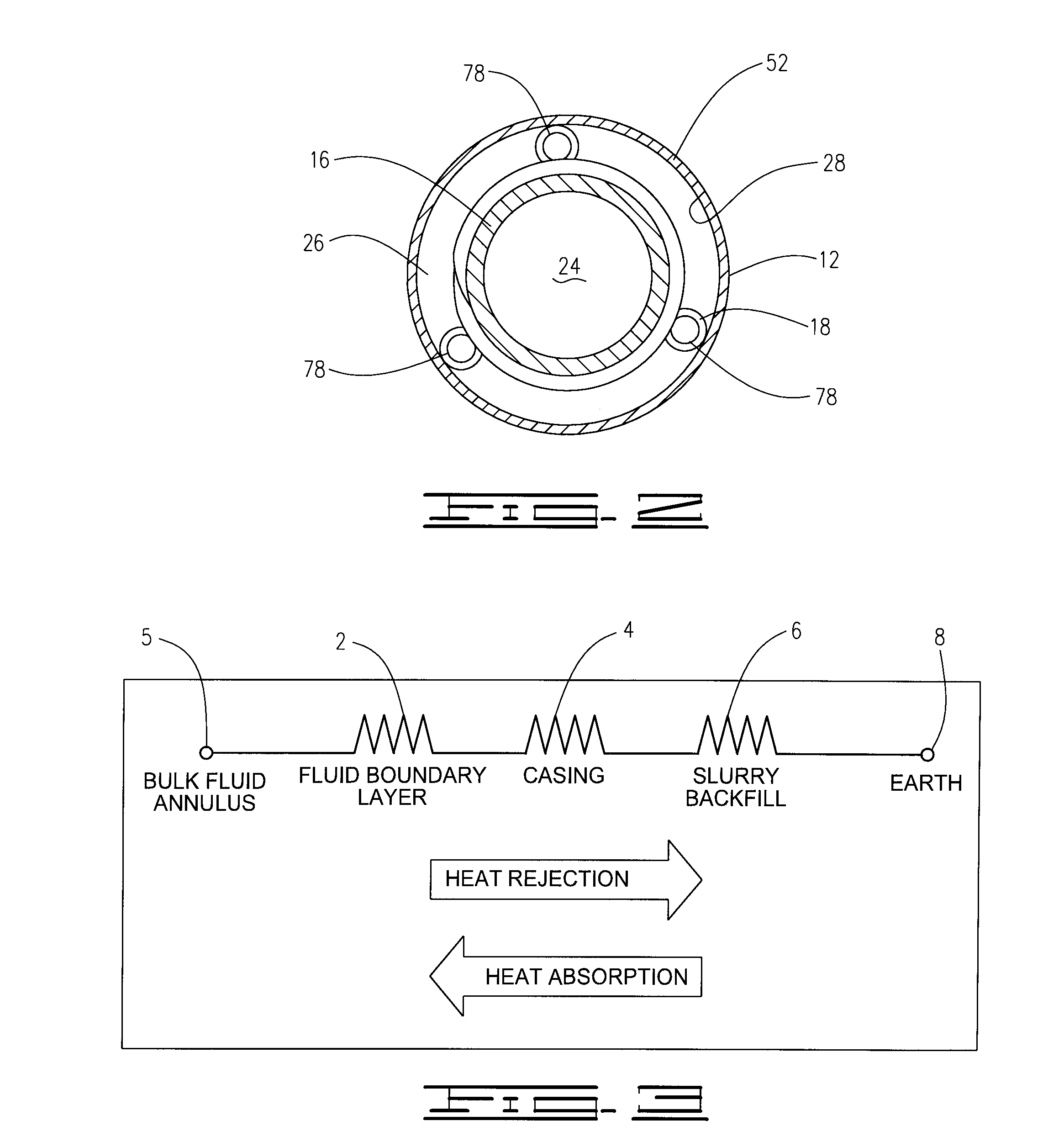Method, apparatus, header, and composition for ground heat exchange
a technology of ground heat exchange and header, applied in special-purpose vessels, lighting and heating apparatus, applications, etc., can solve the problems of ineffective horizontal loop, inability to use methods in urban areas, and eventually failure of metal pipe loop installations
- Summary
- Abstract
- Description
- Claims
- Application Information
AI Technical Summary
Benefits of technology
Problems solved by technology
Method used
Image
Examples
example 1
EXAMPLE 1
[0112]A grout slurry was formed by adding 246 g of treated water (consisting of 240 g water and 6 g sodium chloride) to a dry mix consisting of (a) 120 g of natural flake graphite having a particle size passing (i.e., less than) 200 mesh and (b) 40 g of sodium bentonite having a particle size passing 325 mesh. The salt content of the treated water was thus 2.44% by weight (equivalent to about 1.88 lb. NaCl per 9 gallons of water) and the solids content of the slurry product composition was about 40% by weight. The slurry product was pumpable and had a specific gravity of 1.25. After setting overnight, a layer of water had begun to form on top of the slurry composition by the following morning.
example 2
EXAMPLE 2
[0113]A grout slurry was formed by adding 152 g of treated water (consisting of 150 g water and 2 g sodium chloride) to a dry mix consisting of (a) 75 g of natural flake graphite having a particle size passing a 200 mesh screen and (b) 25 g of sodium bentonite having a particle size also passing a 200 mesh screen. The salt content of the treated water was thus 1.3% by weight (equivalent to 1 lb. of NaCl per 9 gallons of water) and the solids content of the slurry product composition was about 40% by weight. The slurry was more viscous, was not pumpable, was barely pourable, and had set up after one day. No water layer formed on the top of the composition.
example 3
EXAMPLE 3
[0114]A grout slurry was formed by adding 154 g of treated water (consisting of 150 g water and 4 g sodium chloride) to a dry mix consisting of (a) 75 g of natural flake graphite having a particle size passing a 200 mesh screen and (b) 25 g of sodium bentonite having a particle size passing 200 mesh. The salt content of the treated water was thus 2.6% by weight (equivalent to 2 lb. NaCl per 9 gallons of water) and the solids content of the slurry product composition was about 40% by weight. The slurry product was pumpable. After one day, the slurry was thicker, but still pourable, and 4 to 5 g of water had formed on the top of the composition.
[0115]These examples illustrate the effectiveness of the use of a thinning agent in accordance with the present invention for forming and delivering the inventive grout backfill composition. In regard to the use of sodium chloride, potassium chloride, or a mixture thereof as the thinning agent, these examples particularly show the eff...
PUM
| Property | Measurement | Unit |
|---|---|---|
| volume | aaaaa | aaaaa |
| height | aaaaa | aaaaa |
| height | aaaaa | aaaaa |
Abstract
Description
Claims
Application Information
 Login to View More
Login to View More - R&D
- Intellectual Property
- Life Sciences
- Materials
- Tech Scout
- Unparalleled Data Quality
- Higher Quality Content
- 60% Fewer Hallucinations
Browse by: Latest US Patents, China's latest patents, Technical Efficacy Thesaurus, Application Domain, Technology Topic, Popular Technical Reports.
© 2025 PatSnap. All rights reserved.Legal|Privacy policy|Modern Slavery Act Transparency Statement|Sitemap|About US| Contact US: help@patsnap.com



